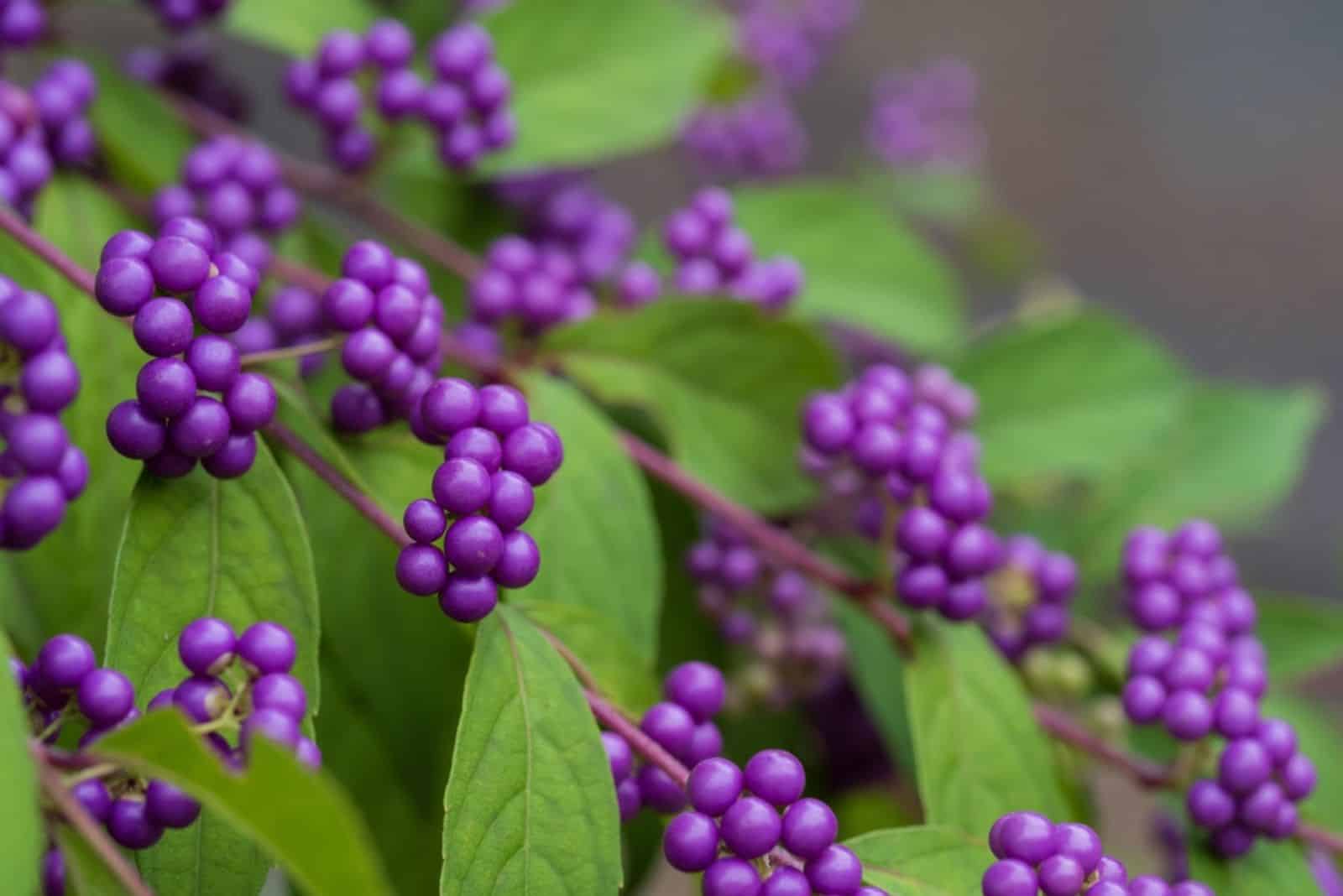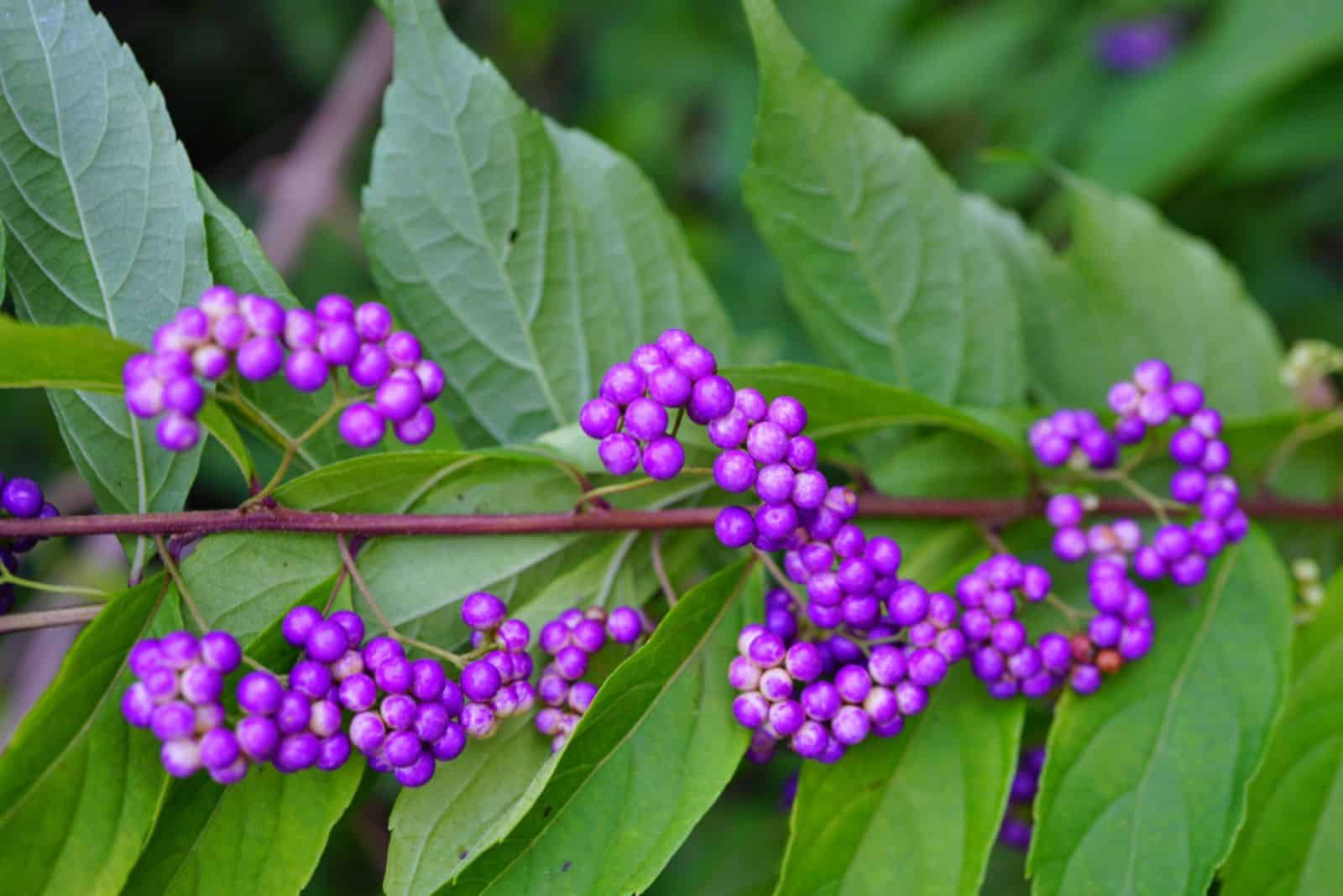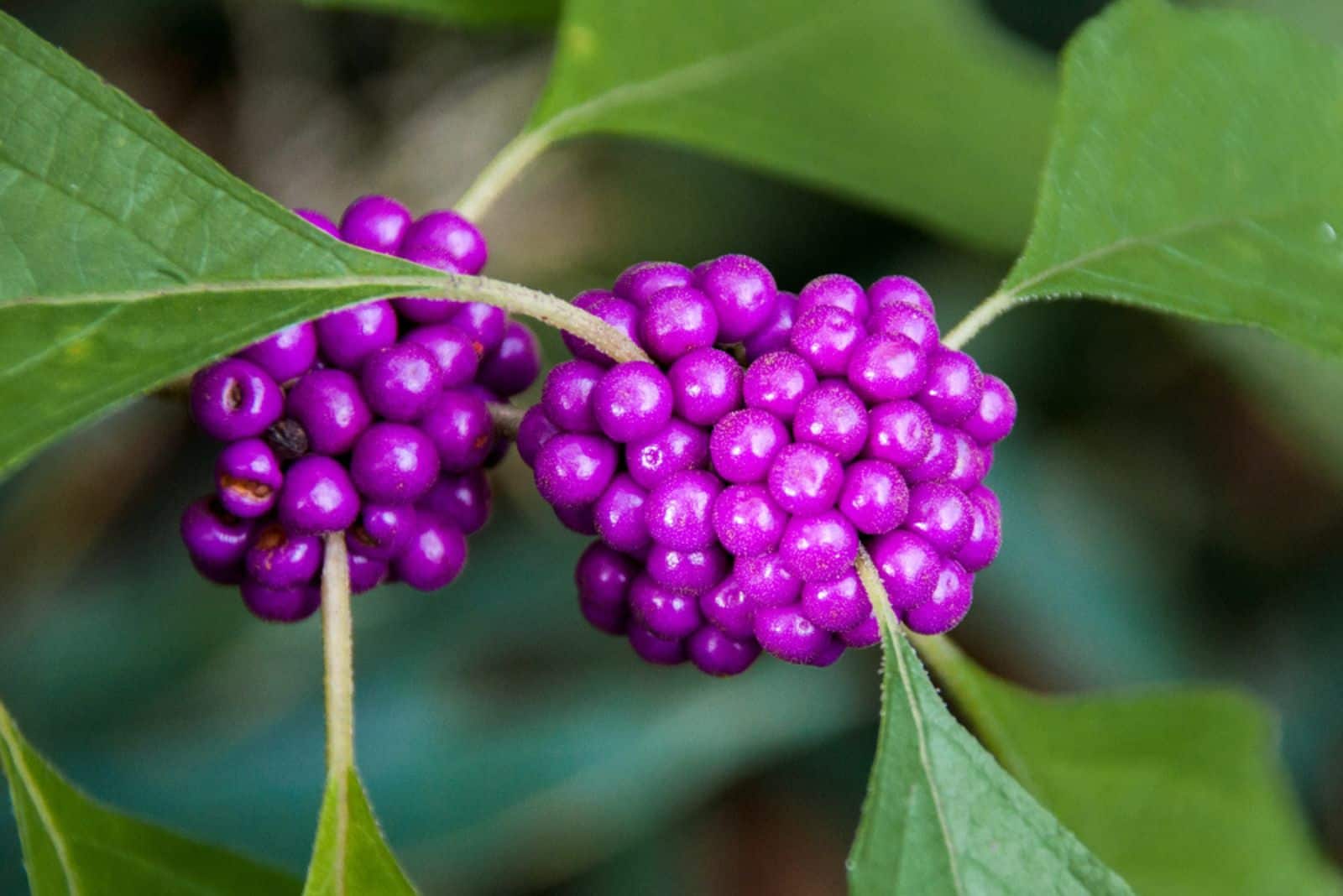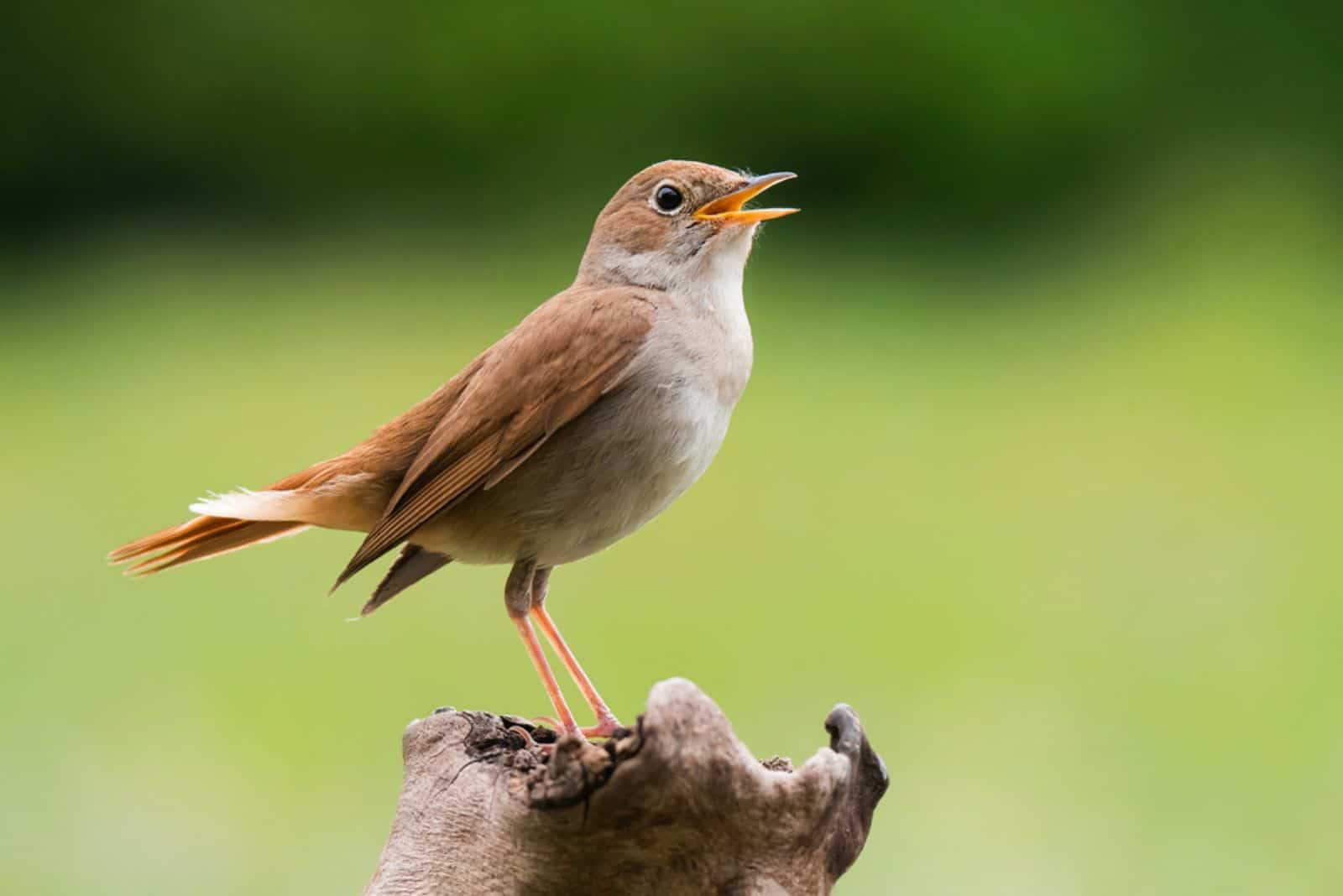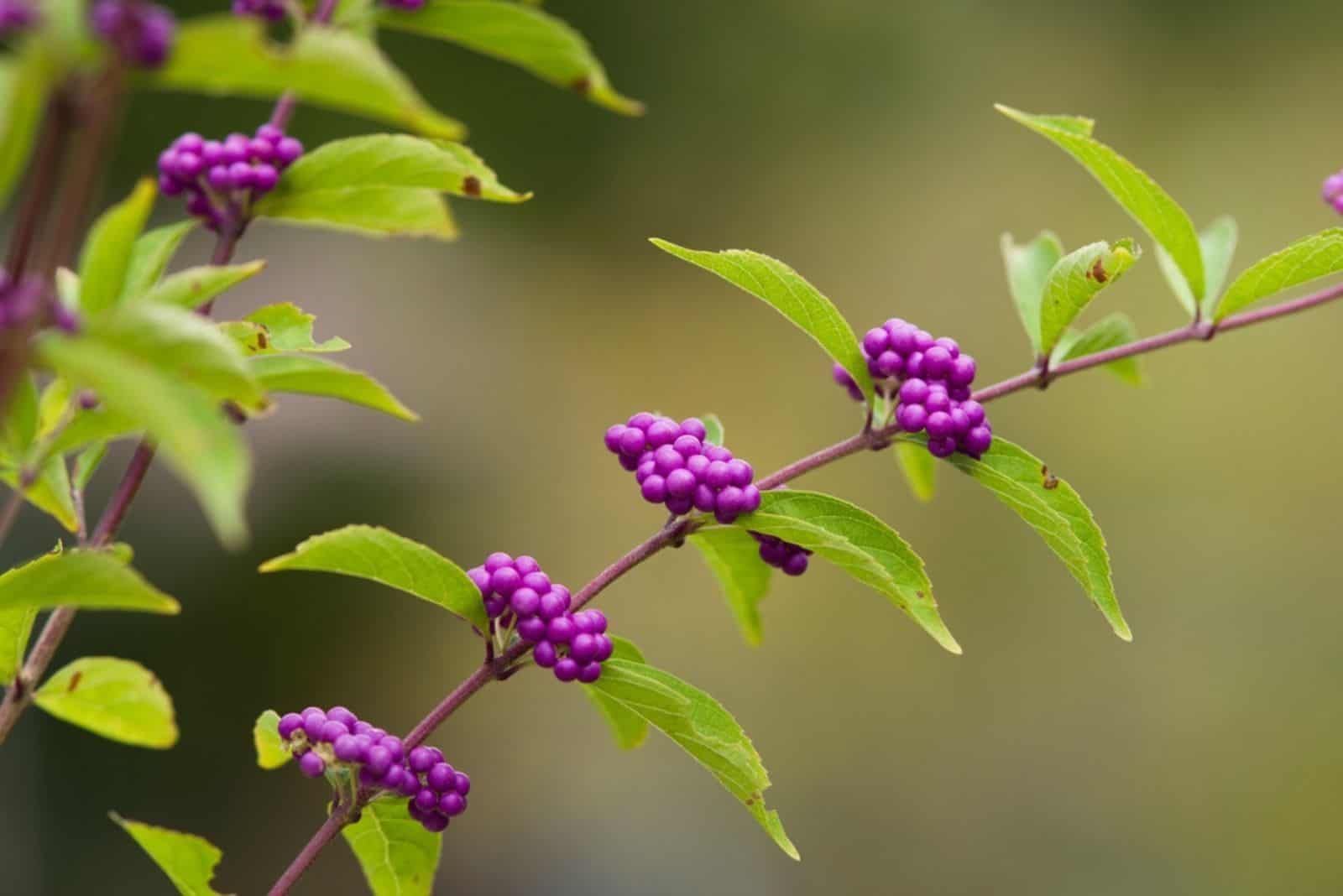If you are looking for an easy-to-grow plant that will add more color to your garden, you have come to the right place!
Meet the beautyberry, otherwise known as Callicarpa. This North American native plant is known for its stunning purple berries that grow in clusters along its branches in the fall.
It is a low maintenance plant that is also drought tolerant and resistant to most pests and diseases, making it an ideal choice for those who want to add beauty to their garden without a lot of fuss.
If you want to learn more about this shrub, be sure to keep reading!
What Is Beautyberry?
The Beautyberry is a popular shrub that’s native to North America. It is known for its prominent purple berries that fit perfectly with the lush, light green foliage that stays intact for most of the year.
During summer, these shrubs are covered with tiny white and purple flowers. However, the showstoppers are definitely the berries that grow afterwards.
Clusters of prominent purple berries that grow along the stems make the bush look like it is adorned with jewels.
When it comes to growth and size, this shrub usually grows up to 6 feet tall and wide. It has an open, loose growth habit with arching branches that give it a prolific appearance.
Reasons To Grow The Beautyberry
Even though they are literally called beautyberries, their sole purpose is not to grow and look pretty. In fact, there are numerous benefits that come with growing beautyberries in your garden.
Not only are they relatively easy to grow, but they also do an excellent job attracting pollinators and repelling pests.
If you are still having doubts, then let’s cover some more reasons why you should grow beautyberries!
1. The Plant Is Native
The Callicarpa is a genus of shrub that is native to North America, Asia, and Australia. The North American beautyberry (Callicarpa americana) and Asian beautyberry (Callicarpa dichotoma) are the two main varieties of beautyberry that are typically found in the United States.
The Callicarpa americana is a perfect choice for those who want to include more native plants in their gardens.
Since the North American beautyberry and Asian beautyberry look alike, you have to learn their similarities and differences in order to distinguish between them. You can look at their growth first.
The American beautyberry is a significantly bigger shrub with more upright-growing branches. Additionally, the berry clusters grow in tightly packed bunches, while Asian varieties have berries that grow on short stems attached to the plant.
Asian berries are also sweeter than the American variety. The shrub develops differently, giving it a “weeping” effect.
No matter which variety you choose, both shrubs are strikingly beautiful and great for improving pollination in the garden.
2. Free Pest Control
Instead of spending all of your money on pesticides, you might consider growing beautyberry shrubs. They contain compounds called callicarpenols that serve as a natural bug repellent.
These compounds are toxic to ticks, mosquitoes, ants, and other pests.
By growing beautyberries, you will avoid using harmful chemicals to repel these critters and get to enjoy a pest-free garden!
3. Pop Of Color For The Garden
Gardens are filled with colorful flowers mostly during spring and summer. Once the fall arrives, most plants go dormant for the season or simply die off.
What was once a beautiful scene now looks relatively dull.
But if you decide to grow beautyberries, your garden will be swamped with glorious purple berries as soon as the fall comes. Clusters of purple berries will last well into the winter too.
That subtle pop of color really stands out, especially when all the other plants die off or go dormant.
4. Berries Are Edible
One of the best reasons to grow berries is that they are super delicious!
You can use them to make jelly, jam, or even wine. However, it is not recommended to eat them raw since they can cause stomach problems, especially for people that are rather sensitive to various foods.
Still, making a delicious purple jam and using it to cook lots of pies sounds like a great idea!
5. Songbirds Like Them Too
If you are a gardener that loves bird watching, then you have probably heard about ways to attract these beauties to your garden. I was trying to attract cardinals for months, and I finally got to see some!
There is nothing more beautiful than hearing melodious birdsong coming from your garden – it truly feels like a dream.
By growing beautyberries, you have already done half the job!
You are not the only one who likes to munch on those berries – birds love them too. And the shrub’s lush foliage and branches create a perfect place for them to hide out.
Beautyberries are a favorite food of many songbirds, including robins, bluebirds, and mockingbirds. By growing beautyberries, you can help attract these birds to your yard and provide them with a valuable food source.
6. Beautyberry Attracts Pollinators
Birds are not the only ones that will want to pay your garden a visit once they spot a beautyberry shrub. Even though we have been focusing on the berries, those tiny flowers still deserve some credit.
The dense flower clusters can attract lots of different pollinators during the blooming period, including native bees and butterflies.
7. Low Maintenance
The final reason you should grow a beautyberry shrub is its impressive adaptability and resilience. This plant can thrive in a wide range of climates and growing conditions, making it an excellent addition to different types of gardens.
Whether you live in a warm, humid region like Florida or a cooler, more temperate climate like New York, the beautyberry is a hardy plant that is up to the challenge.
When it comes to the growing requirements, they do best in full to partial shade, which makes them perfect for shaded gardens. It can also be planted around the edges of wooded areas where the shade is provided by the trees.
These shrubs can also tolerate various soil types, so you don’t have to worry about that either.
Another great benefit of the beautyberry is its resistance to drought and pests. This plant is a real survivor, capable of withstanding periods of extended dryness without suffering any damage.
In addition, it is not typically bothered by common garden issues such as insects or diseases, making it a great plant for beginner gardeners.
I hope you found this article useful.
Until next time!

